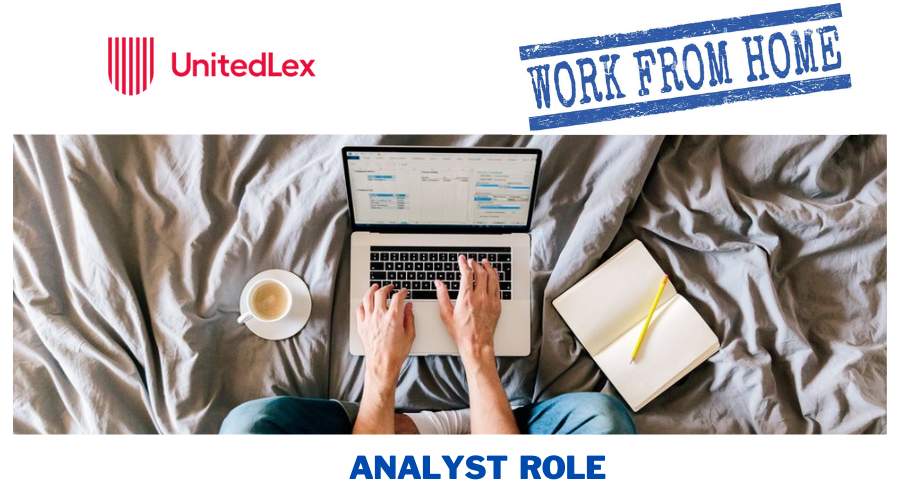Are you preparing for an upcoming interview for an Oracle P2P (Procure to Pay) role and feeling unsure about how to ace it? Don’t worry, we’ve got you covered. In this article, we have compiled a comprehensive list of frequently asked P2P interview questions that are commonly encountered during Oracle P2P interviews.

P2P Interview Questions and Answers for Freshers
1. Explain about Accounts Payable. What is the meaning of an invoice?
Accounts Payable is a financial department or process responsible for managing and recording all outgoing payments and obligations of a company to its suppliers or vendors. It involves activities such as reviewing and processing invoices, ensuring timely payments, maintaining vendor records, and resolving any payment discrepancies or issues.
An invoice is a document issued by a seller to a buyer, indicating the details of a transaction for goods or services provided. It typically includes information such as the product or service description, quantity, price, payment terms, and any applicable taxes or discounts. The invoice serves as a formal request for payment from the buyer to the seller, outlining the amount owed and providing a record for both parties to track and reconcile financial transactions.
2. Can you give a sample Process Flow for Procure to Pay Cycle?
Requisition: The process starts with a purchase requisition submitted by an employee or department requesting goods or services.
Purchase Order (PO) Creation: Upon approval of the requisition, a purchase order is created, detailing the requested items, quantities, agreed-upon prices, and delivery terms.
Supplier Selection and Negotiation: The procurement team identifies suitable suppliers, negotiates terms and conditions, and finalizes the purchase agreement.
Goods Receipt: Upon delivery, the receiving department inspects and verifies the received goods against the purchase order. They record the receipt in the system, indicating the quantity received.
Invoice Processing: The supplier submits an invoice for the delivered goods or services. The accounts payable team matches the invoice with the corresponding purchase order and goods receipt, ensuring accuracy and resolving any discrepancies.
Invoice Approval: The invoice goes through an approval process, where it is reviewed by relevant stakeholders to validate the charges and ensure compliance with internal policies.
Payment Processing: Once the invoice is approved, the accounts payable team initiates the payment process. This may involve scheduling payment, generating payment files, and issuing payments via check, electronic funds transfer, or other agreed-upon methods.
Payment Reconciliation: After the payment is made, the accounts payable team reconciles the payment with the corresponding invoice and updates the system to reflect the payment status.
Vendor Relationship Management: Throughout the P2P cycle, maintaining a good relationship with vendors is essential. This involves timely communication, resolving any issues or disputes, and nurturing a mutually beneficial partnership.
3. What is the difference between EFT & Wire?
The main difference between EFT (Electronic Funds Transfer) and wire transfer lies in the method of funds transfer and the associated timelines.
EFT: Electronic Funds Transfer is a digital method of transferring funds between bank accounts within the same country. It involves the electronic exchange of funds through automated systems, such as Automated Clearing House (ACH) networks. EFT transactions typically take longer to process compared to wire transfers, often ranging from one to three business days. EFT transfers are commonly used for recurring payments, direct deposits, and online bill payments.
Wire Transfer: A wire transfer, on the other hand, is a direct and immediate transfer of funds between different banks or financial institutions, both domestically and internationally. It involves the electronic transmission of funds via a secure network, such as the SWIFT (Society for Worldwide Interbank Financial Telecommunication) system. Wire transfers are generally faster than EFT transactions, with funds often being available within the same business day or a few hours. Wire transfers are commonly used for urgent or time-sensitive payments, such as large business transactions or international remittances.
4. How many types of purchase order types/agreements are there?
There are typically three types of purchase orders or agreements:
Standard Purchase Order: This is the most common type of purchase order used for one-time purchases of goods or services. It specifies the details of the requested items, quantities, agreed-upon prices, delivery terms, and payment terms.
Blanket Purchase Order: A blanket purchase order is a long-term agreement that establishes the terms and conditions for multiple purchases over a specified period. It provides flexibility by allowing the buyer to procure goods or services as needed without creating individual purchase orders for each transaction. It often includes a maximum spending limit and may have specific delivery schedules or release orders associated with it.
Contract Purchase Order: A contract purchase order is a legally binding agreement between the buyer and supplier for the purchase of goods or services over an extended period. It typically includes negotiated terms and conditions, pricing, volume commitments, delivery schedules, and other specific requirements. Contract purchase orders are commonly used for ongoing or repetitive purchases from a single supplier.
5. Explain the P2P process flow?
The Procure to Pay (P2P) process flow encompasses the steps involved in the end-to-end procurement cycle, from requisitioning goods or services to making payment to the supplier. Here’s a brief explanation of the P2P process flow:
Requisition: The process starts with the creation of a purchase requisition, where the need for goods or services is identified by an employee or department within the organization.
Purchase Order (PO) Creation: Upon approval of the requisition, a purchase order is generated. It includes details such as the requested items, quantities, agreed-upon prices, delivery terms, and payment terms.
Supplier Selection and Negotiation: The procurement team identifies suitable suppliers, negotiates terms and conditions, and finalizes the purchase agreement.
Goods Receipt: Upon delivery of the goods or completion of services, the receiving department inspects and verifies the received items. They record the receipt in the system, indicating the quantity received.
Invoice Processing: The supplier submits an invoice for the delivered goods or services. The accounts payable team matches the invoice with the corresponding purchase order and goods receipt, ensuring accuracy and resolving any discrepancies.
Invoice Approval: The invoice undergoes an approval process, where it is reviewed by relevant stakeholders to validate the charges and ensure compliance with internal policies.
6. What is a Purchase Requisition and define various requisitions?
A Purchase Requisition is a formal request made by an employee or department within an organization to procure goods or services. It serves as the initial step in the procurement process, indicating the need for certain items and initiating the purchasing workflow. Different types of requisitions may exist, depending on the organization’s policies and requirements. Here are a few common types of requisitions:
Material Requisition: This type of requisition is used to request the purchase of physical materials or supplies needed for production, operations, or maintenance purposes. It includes details such as the item description, quantity required, and any specific specifications.
Service Requisition: A service requisition is used to request the engagement of services from external vendors or contractors. It could involve various services like consulting, repair and maintenance, IT support, or professional services. The requisition includes details about the type of service required, estimated duration, and any specific terms or deliverables.
Capital Expenditure (Capex) Requisition: Capex requisitions are used for requesting the purchase of long-term assets or investments that provide benefits to the organization over an extended period. This could include equipment, machinery, software licenses, or infrastructure projects. The requisition typically includes a detailed justification, estimated costs, and projected returns on investment.
Travel Requisition: Travel requisitions are used to request travel arrangements for employees, such as flights, accommodation, transportation, or conference registrations. It includes details like the purpose of travel, dates, destinations, estimated costs, and any necessary approvals.
7. What are the base tables that are affected when you create a P.O?
PO_HEADER: This table stores the header information of the purchase order, such as the PO number, supplier details, payment terms, and other general information.
PO_LINES: The PO_LINES table contains the line item details of the purchase order, including the item description, quantity, unit price, and other relevant information.
PO_DISTRIBUTIONS_ALL: This table stores the distribution details of the purchase order lines, such as the accounting information, distribution amounts, and cost center assignments.
PO_LINE_LOCATIONS_ALL: This table tracks the delivery and receipt details for each line item in the purchase order, including the ship-to location, promised delivery date, and receipt routing information.
PO_REQ_DISTRIBUTIONS_ALL: If the purchase order is created based on a requisition, this table captures the distribution details from the requisition, such as the requested quantity, account codes, and project information.
8. What are the major transactions in RECEIVING?
Goods Receipt: This transaction involves physically receiving the ordered goods or services from the supplier. It includes inspecting the received items, verifying their quantity and quality, and recording the receipt in the system.
Material Inspection: As part of the receiving process, materials may undergo an inspection to ensure they meet the specified quality standards. This transaction involves conducting quality checks, comparing received items against the purchase order or specifications, and documenting any discrepancies or damages.
Putaway: Putaway is the transaction of moving received items to their designated storage locations within the organization’s warehouse or inventory management system. It involves updating the inventory records, assigning storage locations, and ensuring proper organization and accessibility of the received goods.
Return or Rejection: If the received goods do not meet the required specifications or quality standards, a return or rejection transaction may occur. This involves initiating the process to return the goods to the supplier or requesting a replacement or refund.
Quantity and Quality Verification: During the receiving process, a transaction is conducted to verify the received quantity and quality of the items against the purchase order or agreement. This ensures accuracy in inventory records and enables timely resolution of any discrepancies or issues.
9. What is an approval hierarchy?
An approval hierarchy is a defined structure or sequence of individuals or roles within an organization who have the authority to review and approve certain processes, transactions, or requests. It outlines the order in which approvals must be obtained, typically starting from lower-level personnel and progressing to higher-level authorities. The hierarchy ensures that appropriate levels of authorization and oversight are in place, promoting accountability, compliance, and efficient decision-making within the organization. Approval hierarchies can be established for various processes, such as purchase orders, expense claims, leave requests, or project proposals, and they help ensure that all necessary approvals are obtained in a systematic and controlled manner.
10. What does create an internal order conc request do?
The “Create Internal Order Concurrent Request” is a functionality or process in an enterprise resource planning (ERP) system, typically used in the context of financial management or project accounting. It refers to a specific concurrent request or program that generates internal orders within the system. The purpose of this request is to create internal orders, which are cost objects or entities used to track and manage specific expenses, activities, or projects within an organization. The creation of internal orders through this concurrent request allows for better cost control, budgeting, and financial reporting within the ERP system.











